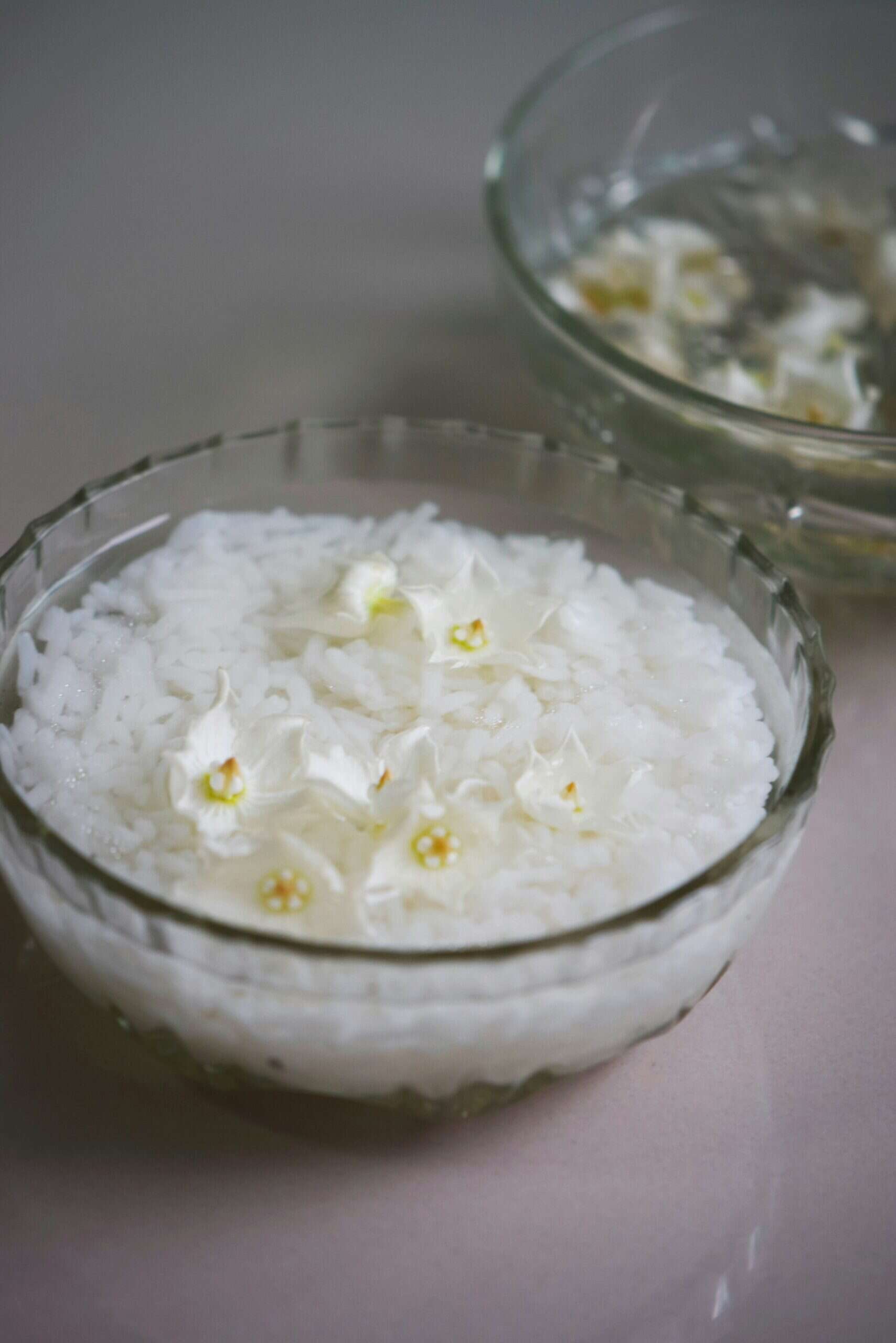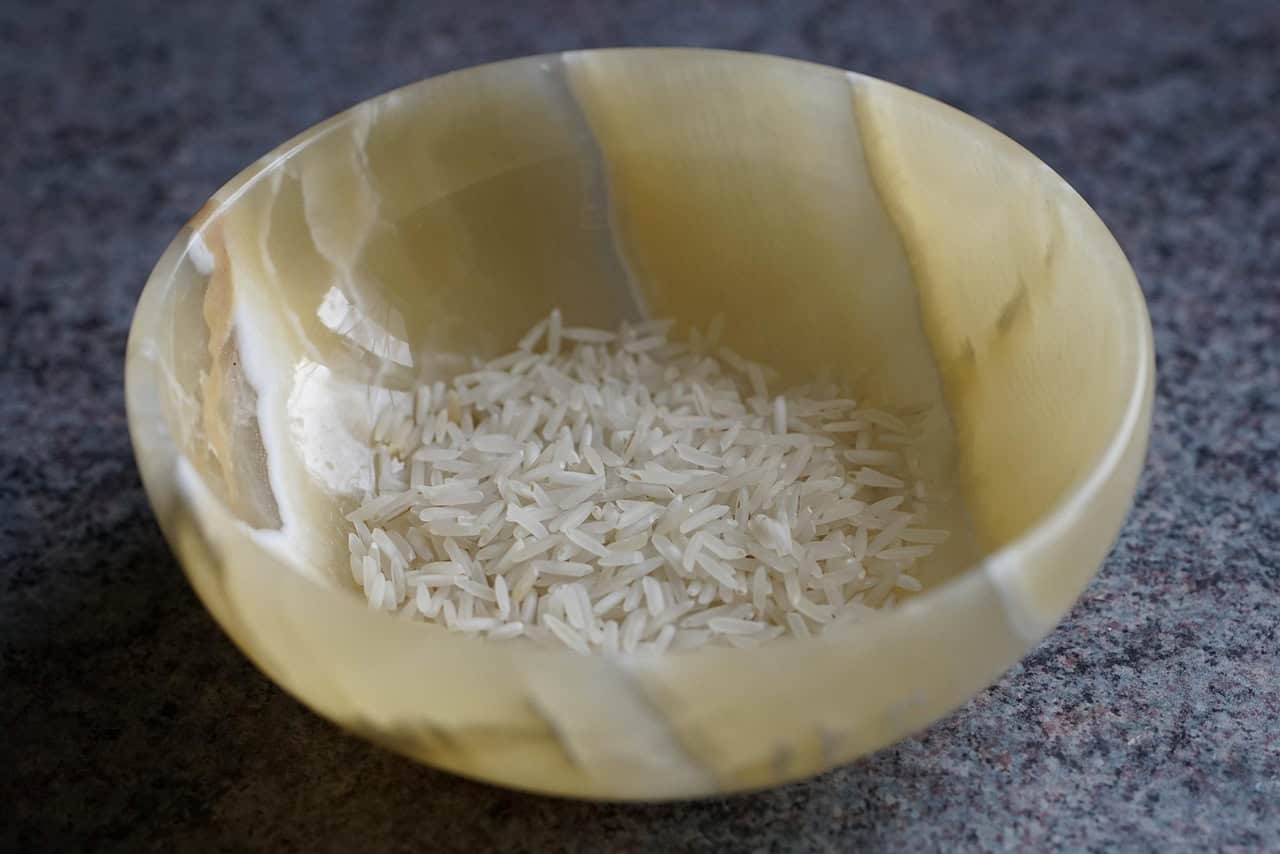When it comes to timeless beauty secrets, Korean skincare has long led the way with gentle, natural ingredients, and rice water is one of its most cherished staples. For generations, women in Korea have used the starchy, milky liquid left behind from rinsing rice as a skin-brightening, soothing elixir. Today, rice water is having a major comeback in modern K-beauty routines, praised for its simplicity, effectiveness, and glowing results.
Whether you’ve seen it in trendy toners or DIY tutorials, there’s more to this humble ingredient than meets the eye. In this blog, we’ll explore why rice water is a quiet powerhouse in Korean skincare and how you can easily make and use it at home for radiant, refreshed skin.

Jump to:
🌾 Why Rice Water Is a Staple in Korean Skincare
Long before serums and sheet masks became skincare essentials, Korean women were already reaching for rice water to care for their skin. Historical records trace its use back to the Joseon dynasty, where court ladies and villagers alike used rice-rinsed water to cleanse and soften their skin. It was simple, accessible, and effective—a reflection of traditional Korean beauty's focus on natural, gentle care.
Today, this centuries-old practice is still very much alive, now bottled into toners, essences, and emulsions by some of Korea’s most popular skincare brands. But even with modern options available, many still turn to the DIY method—not only for its affordability but for the clean, minimal approach that aligns with the heart of Korean skincare: balance, hydration, and glow.
✅ Top Skin Benefits of Rice Water
Brightens and Evens Out Skin Tone
Rice water contains natural enzymes that help fade dark spots and improve overall brightness. It’s especially loved for its ability to give skin that soft, radiant, “glass skin” look.
Soothes Irritation and Redness
Thanks to its anti-inflammatory properties, rice water can calm sensitive or inflamed skin. It’s often used to relieve sunburn, rashes, or general irritation.
Strengthens the Skin Barrier
The nutrients in rice water support a healthy skin barrier, making it more resilient against dryness, pollution, and other stressors. Over time, this can lead to smoother, more supple skin.
Refines Pores and Controls Oil
If you have oily or acne-prone skin, rice water can help regulate sebum production and minimize the appearance of pores, all without stripping moisture.
Hydrates Without Heaviness
Lightweight but effective, rice water offers a refreshing boost of hydration. It’s ideal for layering into your routine, especially in hot or humid weather.
🧑🔬 How to Make Rice Water for Your Skincare Routine
One of the best things about rice water is how easy it is to make at home. With just rice and water, you can create a gentle, effective skincare ingredient that rivals store-bought toners, and you don’t need fancy equipment or rare ingredients to get started.
Method 1: Soaking (Quick and Easy)
- Rinse ½ cup of uncooked white rice to remove dirt and excess starch.
- Place the clean rice in a bowl with 2 cups of water.
- Let it soak for 30 minutes while gently swirling it around every few minutes.
- Strain the water into a clean container — this is your rice water.
- Store in the fridge for up to 5–7 days.
Method 2: Boiled (More Concentrated)
- Boil rice with double the usual amount of water.
- Once cooked, strain the excess water before it fully evaporates.
- Let it cool before transferring to a clean container.
- Store in the fridge and use within a week.
Method 3: Fermented (For Extra Potency)
- Use the soaking method above, but instead of refrigerating immediately, leave the rice water in a sealed jar at room temperature for 24–48 hours.
- Once it starts to smell slightly sour (a sign it has fermented), store it in the fridge.
- Fermented rice water is believed to have enhanced antioxidant and anti-aging benefits, but it’s stronger, so patch test first.

🤔 How to Use Rice Water in Your Skincare Routine
As a Toner
After cleansing, apply rice water to your face using a cotton pad or by gently patting it in with your hands. Let it absorb before applying your next product.
As a Face Mist
Transfer your rice water into a small spray bottle and use it as a refreshing mist throughout the day. It’s perfect for midday hydration or a cooling touch in hot weather.
In DIY Sheet Masks
Soak cotton pads or a dry sheet mask in rice water and leave it on your face for 10–15 minutes. It’s a great way to give your skin a quick, nourishing boost.
As a Rinse-Off Treatment
For oily or acne-prone skin, you can use rice water as a gentle rinse after cleansing. Leave it on for a few minutes, then wash it off to help refine pores and calm irritation.
How Often Should You Use It?
Start by using rice water 2–3 times a week and see how your skin responds. Some people can use it daily, while others may find a few times per week is enough. As always, patch test first—especially if you’re using fermented rice water.
🗒️ Storage Tips & Shelf Life
How to Store It
- Refrigerate immediately after preparing to slow down bacterial growth.
- Use a clean, airtight container (preferably glass) to keep it fresh and contamination-free.
- Label the container with the date you made it so you can track its shelf life.
How Long Does It Last?
- Fresh rice water (soaked or boiled): best used within 5–7 days.
- Fermented rice water can last slightly longer — around 7–10 days, but keep an eye (and nose) on it.
When to Throw It Out
- If it smells off, becomes too sour, or changes texture (gets overly cloudy or slimy), it’s time to toss it.
- Always err on the side of caution when applying anything homemade to your face.
❓Frequently Asked Questions
Rice water is generally lightweight and non-comedogenic, meaning it won’t clog pores for most people. However, if you have very sensitive or acne-prone skin, patch testing is always recommended.
Yes, rice water has soothing and oil-regulating properties that can help reduce redness and prevent breakouts. It’s not a cure-all, but it can be a gentle addition to your acne-care routine.
Some people do—especially if they dilute it or use it as a mist. But if you’re new to it, start with 2–3 times per week and adjust based on how your skin reacts.





Comments
No Comments